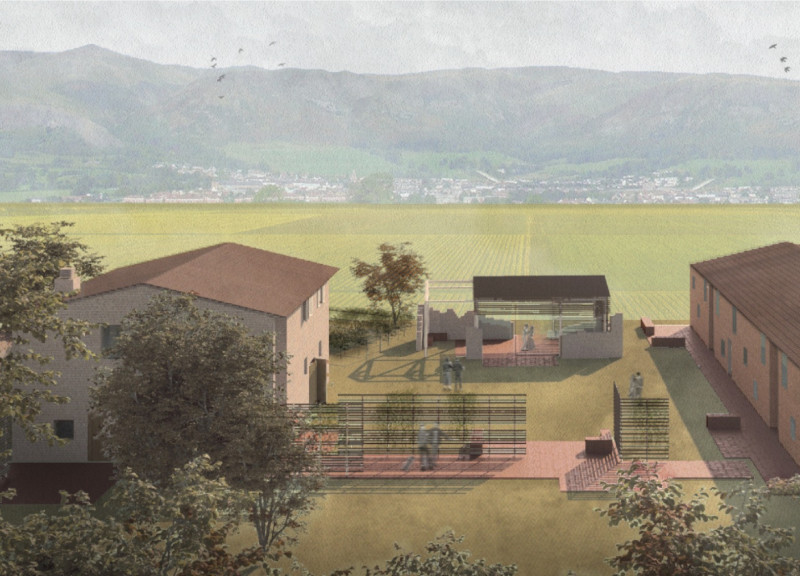5 key facts about this project
The Tili Vini Guest House features a design that connects guests with nature and the Tili family’s winemaking heritage. Located in a beautiful rural area, the project includes three distinct buildings, each serving a specific function while reflecting a design concept grounded in simplicity and harmony.
Building Composition
One of the main structures consists of five guest houses that offer private accommodations designed for couples. Each house is situated thoughtfully within the landscape, ensuring that they integrate well with their surroundings. The proportions and forms of these buildings are inspired by local architectural traditions, promoting a feeling of calm and retreat.
Wine Tasting Area
Next to the guest houses stands a wine tasting area, located within a renovated historical building. The original facade has been preserved, showcasing the rich cultural history of the region. This thoughtful reuse of an existing structure provides visitors with an authentic experience, allowing them to enjoy the area’s winemaking traditions in a setting characterized by the natural beauty of the aging bricks that adorn the walls.
Communal Stage and Courtyard
A communal stage serves as a central gathering space for events and social interactions. This design element creates a connection between inside and outside spaces, encouraging interactions among guests. The courtyard next to this stage offers a welcoming area that facilitates informal gatherings, enhancing the sense of community.
Natural Landscape Integration
The design incorporates expansive vineyards that serve both aesthetic and functional purposes. These vineyards help to create an experiential journey that draws guests through the landscape, delivering a sensory experience as they approach the wine tasting area. Historical ruins found throughout the site add depth to the environment, contributing to a rich sense of history and place.
Large windows in the wine tasting area frame the views of the vineyards, allowing natural light to flood in. This design invites guests to engage with the surroundings while enjoying the wines produced from the local grapes, creating a deeper connection to the space and its heritage.






















































